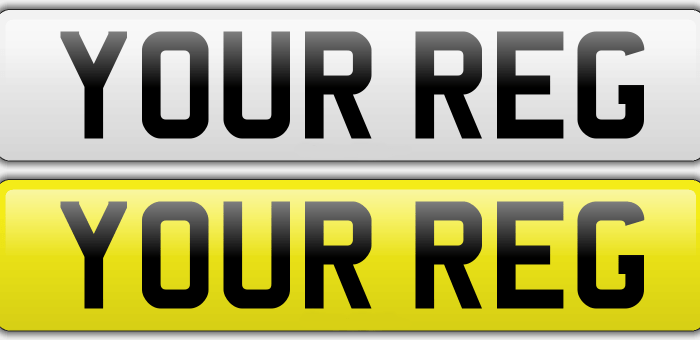The Traffic Department said Monday that motorists whose vehicle registration plates are not in compliance with the law have 24 hours to change them or face prosecution.
“We have observed where some motorists are putting number plates on dashboards, others are writing the numbers on papers as well as using italics on their number plates. We want to deal with those issues early this year,” Sergeant Henry Providence of the Traffic Department said.
“To this end, the public has 24 hours to have the plates corrected if they are not,” he added.
The laws of St. Vincent and the Grenadines say that the background of the plate shall be black and the letters and figures shall be white; or for front plates, the background of the plate shall be white (luminous) and the letters and figures be black. For rear plates, the background of the plate shall be yellow (luminous) and the letters and figures shall be black.”

Providence further noted that the law says, “All letters and figures must be three and a half inches high; every part of every letter and figure must be five-eights of an inch broad; and the total width of the space taken by every letter or figure except in the case of figure ‘1’, must be two-and-a-half inches.”
The law further says: “The space between adjoining letters and between adjoining figures must be half-an-inch, and there must be a margin between the nearest part of any letter or figure and the top and bottom of the plate of at least half-an-inch, and between the nearest part of any letter or figure and the sides of the plate of at least one inch”.
Regarding the position of vehicle identification mark, the law said that the plates shall be fixed, one on the front and the other on the back of the motor vehicle or trailer, in an upright position, so that every letter or figure on the plate is upright and easily distinguishable, in the case of the plate placed on the front of the motor vehicle or trailer, from in front of the motor vehicle or trailer, and in the case of the plate placed on the back, from behind the motor vehicle or trailer.
Where motorcycles are concerned, the plate fixed on the front of the cycle may, if it is a plate having duplicate faces conforming with the Second Schedule, be fixed so that from whichever side the cycle is viewed the letters or figures on one or other face of the plate are easily distinguishable, though they may not be distinguishable from the front of the cycle, the law states.
Any person who contravenes or fails to comply with any of the provisions of these regulations is guilty of an offence and liable to a fine of not less than EC$250 and of not more than EC$2,000 and to imprisonment for 21 days, the “Offences and penalties” section of the law states.







It needs an Einstein to figure out those ramifications and figures. Why not tell motorist where they can have the plates done to fit the requirements. I thought the plates were once done in prison, but many people would probably stay out of that environment.
It will also be a tedious job for the police to measure and record all that information needed to make the plate valid.
Excellent! We are enforcing the traffic laws and perhaps later enhancing them and creating new ones…or are we?
Just a few bits to think about in our lawless society from the standpoint of either laws not enforced or laws needed – yes, we need more laws to cover some of these, but the many laws already in place and not enforced means no laws and in essence, a lawless society:
1.Is the inspection process fit for purpose or just a money making thing? After all, many of these non compliant plates most likely were affixed to inspected vehicles – what’s the purpose of inspection again? …..but the police can always say that the masses with “illegal plates” changed the plates after inspection..right?
2.What about all those other traffic problems and risks:
(a) Speeding and reckless driving by so many notorious characters and vehicles racing side by side around corners on our main roads – where is the “Points System” and Radar Guns that rumor has it were available and approved many years ago but still not implemented?
(b) Illegal parking all over this country, not just during the day as we see for vehicles parked in the no parking zones along main roads such as in front of Calliaqua Police Station, but also overnight with some vehicles, including deadly trailers, now permanent fixtures on our narrow road sides (eye sore and health hazard too). Here’ my new rule relating to the latter: you don’t get to register a vehicle unless you demonstrate an approved overnight parking area – especially for large commercial vehicles;
(c) Vans with passengers over legal limit, and loud/offensive music & videos;
(d) No respect by motorist for the lines in the road – what do they mean these days anyway?
(e) Vehicles with aftermarket fitted extremely bright HID lights that blind you at night – not the ones that are part of OEM with non offensive brightness (yes, this can be measured);
(f) So many vehicles emitting black smoke that affects visibility and chokes you;
(g) So many utility vehicles transporting materials without proper safety controls – on 3 separate occasions I saw situations where those extremely large sacs of cement fell off the trucks – fortunately no one was injured;
(h) So many cases of vehicles with broken or absent lights and worn tyres;
(i) Motorbikes that endanger other motorist and do not seem to be held to same traffic rules as other vehicles – as evident by them bobbing and weaving through traffic, even bypassing traffic police – one of them recently “popped a wheelie’ up the stretch along the airport pass two traffic police without even a glance from the police.
It is a proven concept that effective policing is necessary for crime prevention and control. Yes, there may be sporadic “policing” of some of the above, but overall, “policing” is clearly ineffective judging by the number of incidents and repeat offenders. What does it really take to have effective policing? Is it really all about money and extrinsic rewards to get the job done right? Who is and should be held ultimately accountable for ineffective policing?
TB